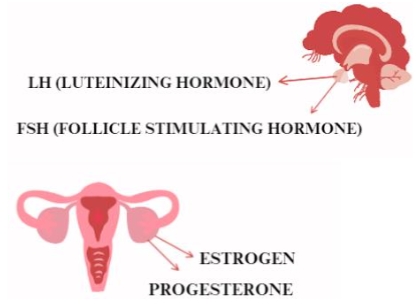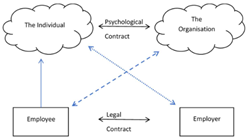Psychological insights into language acquisition: Effects on speaking performance
Abstract
This study looks into how well form-focused instruction coupled with listening-based teaching strategies might improve English as a Second Language (ESL) students’ speaking abilities. The relationship between vocabulary proficiency, attentive listening abilities, and active participation in speaking tasks among ESL learners is the main emphasis of the study. Data from the pre- and post-test outcomes of 72 ESL students were analysed quantitatively using statistical techniques. Pre-test results showed a variety of skill levels from basic to intermediate and maybe higher, with participants categorized into “Beginning,” “Developing,” and “Bridging” groups. The effectiveness of the interventions was demonstrated by the post-test findings, which showed that speaking abilities at all competence levels increased with the use of instructional techniques and speaking practice procedures. The study emphasizes the importance of cognitive and affective components in language acquisition from a psychological standpoint. While form-focused education aids in the internalization of vocabulary and grammatical structures, listening-based teaching strategies activate students’ auditory processing talents, which are essential for language learning. These techniques probably lessen cognitive overload and improve recall because they encourage active listening and involvement. A positive attitude toward language acquisition and increased self-efficacy can also be fostered and anxiety reduced in pupils by the organized and encouraging learning environment. The study highlights how important it is to implement effective teaching strategies that blend form-focused education with content-rich, literature-based instruction to enhance ESL students’ speaking ability. The findings provide useful data that aids in curriculum designers and language instructors in modifying their pedagogical approaches in accordance with students’ proficiency levels, leading to more targeted and efficient language learning experiences. Subsequent research endeavours may explore the enduring consequences on the enhancement of linguistic proficiency and delve more profoundly into specific domains of teaching methodologies. All things considered, this study contributes to the ongoing discussion in language instruction and offers practical guidance to ESL instructors worldwide.
References
[1]Millard DJ. Form-Focused Instruction in Communicative Language Teaching: Implications for Grammar Textbooks. TESL Canada Journal. 2000; 18(1): 47. doi: 10.18806/tesl.v18i1.899
[2]Lyster R. Using form-focused tasks to integrate language across the immersion curriculum. System. 2015; 54: 4-13. doi: 10.1016/j.system.2014.09.022
[3]Housen A, Kuiken F. Complexity, Accuracy, and Fluency in Second Language Acquisition. Applied Linguistics. 2009; 30(4): 461-473. doi: 10.1093/applin/amp048
[4]Brand C, Götz S. Fluency versus accuracy in advanced spoken learner language. Errors and Disfluencies in Spoken Corpora. 2011; 16(2): 255-275. doi: 10.1075/ijcl.16.2.05bra
[5]Lasagabaster D. Literary awareness in the foreign language classroom. Cultura y Educación. 1999; 11(2-3): 5-17. doi: 10.1174/113564002320516740
[6]Mart CT. Literature in language teaching: A recipe to maximize learning. L1 Educational Studies in Language and Literature. 2018; 18: 1-25. doi: 10.17239/l1esll-2018.18.01.09
[7]Mart C. Reader-Response Theory and Literature Discussions: a Springboard for Exploring Literary Texts. The New Educational Review. 2019; 56(2): 78-87. doi: 10.15804/tner.19.56.2.06
[8]Norris JM, Ortega L. Effectiveness of L2 instruction: A research synthesis and quantitative meta-analysis. Language Learning. 2000; 50(3): 417–528. doi: 10.1111/lang.2000.50.issue-3
[9]Spada N. Form-Focussed Instruction and Second Language Acquisition: A Review of Classroom and Laboratory Research. Language Teaching. 1997; 30(2): 73-87. doi: 10.1017/s0261444800012799
[10]Habók A, Magyar A. Validation of a Self-Regulated Foreign Language Learning Strategy Questionnaire Through Multidimensional Modelling. Frontiers in Psychology. 2018; 9. doi: 10.3389/fpsyg.2018.01388
[11]Oxford R. Language learning strategies: What every teacher should know. New York: Newburry House/Harper & Row; 1990.
[12]Oxford RL. Teaching and researching language learning strategies: Self-regulation in context. New York, NY: Routledge; 2016.
[13]Anderson NJ. L2 learning strategies. In: Hinkel E (editor). Handbook of research in second language teaching and learning. Mahwah, NJ: Lawrence Erlbaum; 2005. pp. 757–819.
[14]Nagy J, Habók A. Attitudes and Behaviors Related to Individual and Classroom Practices: An Empirical Study of External and Internal Factors of ICT Use. Libri. 2018; 68(2): 113-123. doi: 10.1515/libri-2017-0099
[15]Habók A, Magyar A. The Effect of Language Learning Strategies on Proficiency, Attitudes and School Achievement. Frontiers in Psychology. 2018; 8. doi: 10.3389/fpsyg.2017.02358
[16]Wu YL. Language learning strategies used by students at different proficiency levels. Asian EFL Journal. 2008; 10(4): 75-95. doi: 10.5539/ijel.v1n2p203
[17]Green JM, Oxford R. A Closer Look at Learning Strategies, L2 Proficiency, and Gender. TESOL Quarterly. 1995; 29(2): 261. doi: 10.2307/3587625
[18]Baker W, Boonkit K. Learning Strategies in Reading and Writing: EAP Contexts. RELC Journal. 2004; 35(3): 299-328. doi: 10.1177/0033688205052143
[19]Mokhtari K, Sheorey R. Measuring ESL students’ awareness of reading strategies. Journal of Developmental Education. 2002; 25(3): 2-10.
[20]Norouzian R, Mehdizadeh M. Reading strategy repertoires in EAP contexts: Students and teachers in academic reading strategy use. The International Journal of Language Learning and Applied Linguistics World. 2013; 3(1): 5-12.
[21]Shang HF. Reading strategy use, self-efficacy and EFL reading comprehension. Asian EFL Journal. 2010; 12(2), 18-42.
[22]Mokhtari K, Reichard CA. Assessing students’ metacognitive awareness of reading strategies. Journal of Educational Psychology. 2002; 94(2): 249-259. doi: 10.1037/0022-0663.94.2.249
[23]Sheorey R, Baboczky ES. Metacognitive awareness of reading strategies among Hungarian college students. In: Mokhtari K, Sheorey R (editors). Reading strategies of first- and second-language learners: See how they read. Norwood, MA: Christopher-Gordon Publishers; 2008. pp. 161-173.
[24]Preedy VR, Watson RR. Handbook of disease burdens and quality of life measures. Springer; 2010. doi: 10.1007/978-0-387-786650_6466
[25]Ellis R. Corrective feedback in teacher guides and SLA. Iranian Journal of Language Teaching Research. 2013; 1(3): 1-18.
[26]Agudo JdDM. An investigation into how EFL learners emotionally respond to teachers’ oral corrective feedback. Colomb. Appl. Linguist Journal. 2012; 15: 265-319. doi: 10.14483/udistrial.jour.calj.2013.2.a08
[27]Elsaghayer M. Affective Damage to Oral Corrective Feedback among Students in Libyan Secondary Schools. IOSR Journal of Research & Method in Education (IOSRJRME). 2014; 4(6): 74-82. doi: 10.9790/7388-04627482
[28]Al-Ghezi R, Getman Y, Rouhe A, et al. Self-supervised end-to-end ASR for low resource L2 Swedish. Proceedings Interspeech. 2021; 1429-1433. doi: 10.21437/Interspeech.2021-1710
[29]Devlin J, Chang MW, Lee K, Toutanova K. Bert: Pre-training of deep bidirectional transformers for language understanding. In: Proceedings of NAACL-HLT. Association for Computational Linguistics; 2019. pp. 4171-4186.
[30]Saleh NS, Murtaza SF. English Language Use in Malaysian Government and Private Civil Engineering Workplaces. International Journal of Education and Literacy Studies. 2018; 6: 84-91.
[31]Turner CE, Upshur JA. Rating Scales Derived from Student Samples: Effects of the Scale Maker and the Student Sample on Scale Content and Student Scores. TESOL Quarterly. 2002; 36(1): 49. doi: 10.2307/3588360
[32]Khattri N, Reeve AL, Kane MB. Principles and practices of performance assessment. Mahwah, NJ: Lawrence Erlbaum; 1998.
[33]Yamashiro AD. Integrating American speech communication research into EFL. Speech Communication Education. 1999; 12: 111-131.
[34]Turner C. Listening to the Voices of Rating Scale Developers: Identifying Salient Features for Second Language Performance Assessment. The Canadian Modern Language Review. 2000; 56(4): 555-584. doi: 10.3138/cmlr.56.4.555
[35]Yamashiro AD. Using structural equation modeling for construct validation of an English as a foreign language public speaking rating scale [PhD thesis]. Tokyo: Temple University; 2002.
Copyright (c) 2023 S. Banupriya, B. R. Aravind

This work is licensed under a Creative Commons Attribution 4.0 International License.









